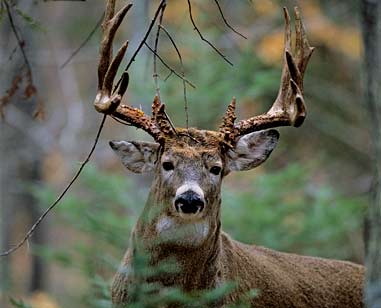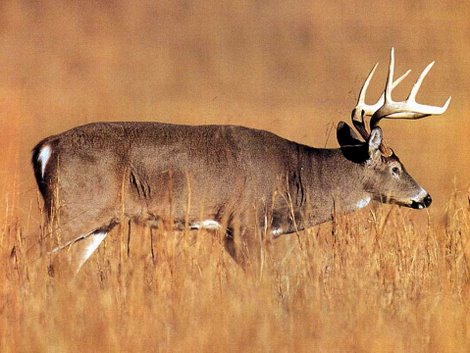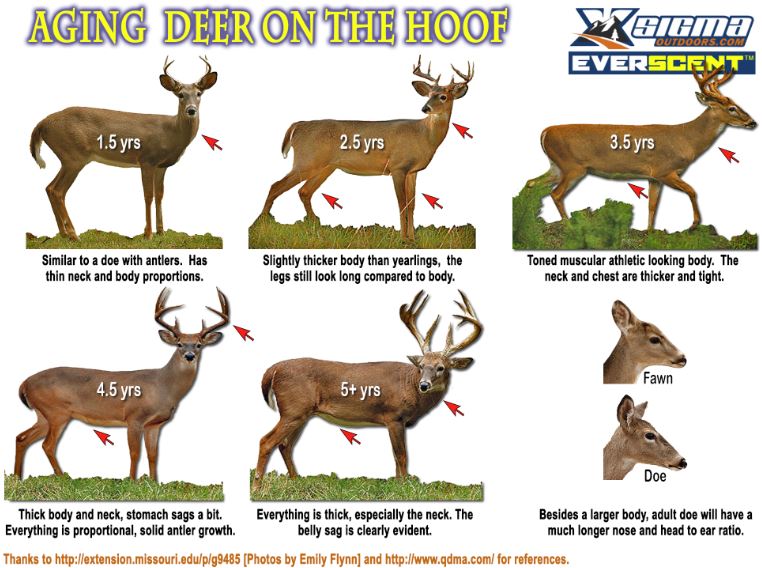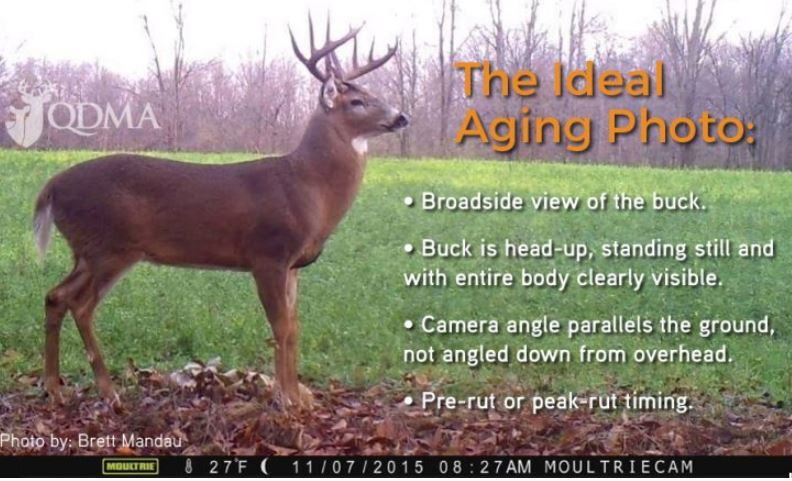As a biologist and hunter interested in quality white-tailed deer management, there are a few questions people always seem to ask me: “What do you think he’ll score?” This is usually followed by their second question, “How old is he?”
Although these are both good questions, they usually are not asked in the proper order. The very first question you should ask before pulling the trigger is “how old?” For any hunter that is interested in harvesting a mature whitetail buck, the best way to improve the odds is to pass on harvesting good young and middle-aged deer. If you aren’t willing to let them live another year, how then do you expect to shoot a larger buck? Luck?
Estimating the age of deer can be hard. This can be especially difficult if the buck is a hundred or more yards away, the deer is obscured, moving, and the hunter is trying to make up his mind as to whether or not to squeeze the trigger.

The fact is that hunters make the ultimate management decision as to whether or not the deer lives to grow older, and ideally gets older and grows into a bigger deer with a larger set of antlers. It’s not THE goal for every hunter, by no means, but many hunters desire bucks with larger antlers. The most direct way to achieve this goal is to let deer age, get older. This is why aging a deer on the hoof is important. In general, letting bucks get older will allow them to get bigger. However, not all bucks will reach 150, 170, or 200+ inches on the Boone & Crockett scoring system.
Why is age important you ask? Whitetail bucks as a group tend to produce their very best antlers once they mature and complete their long-bone growth. With most bucks, their skeletal growth is completed when they are about 4-years of age. It varies though. Some bucks may be fully-mature at 3 and others at 5-years old.
Until a buck’s bones are completely developed, body development will always take precedence over antler development. Now you can appreciate why bucks produce bigger antlers as they age and the largest-antlered bucks tend to be the biggest-bodied.
If you want whitetail bucks in your area to produce bigger antlers they need to be allowed to mature. In addition, they need good nutrition, which can be provided through good habitat management and even supplemented through a feeding or food plot program.
Providing good habitat includes keeping deer populations at or below the carrying capacity a given area of habitat can support. Bucks with good genetic potential will never grow big if they don’t have enough to eat! Ever notice that the biggest bucks always seem to come from areas with a low deer density?
The quality of deer habitat is reflected in the antlers of mature bucks. Good habitat with sufficient food produces good antlers. You can see this phenomenon between “drought” years and “wet” years. During dry years, bucks will have lower body weights and antler quality will be below average for age classes, but during years of abundant rainfall deer will be larger and have larger antlers. Managing deer is about manipulating both habitat and deer for optimal or high quality conditions year after year.
Hopefully, I have given you a better understanding of the important of aging deer in the field. Removing a great 3 1/2-year old buck will not allow you to harvest a truly awesome 5 1/2-year old later. Pass on him and take an inferior buck or a buck that has reach his maximum potential (which may not be that impressive). Base your shots on age AND antler size, not just antler size, and you will see the difference within just a year or two.



